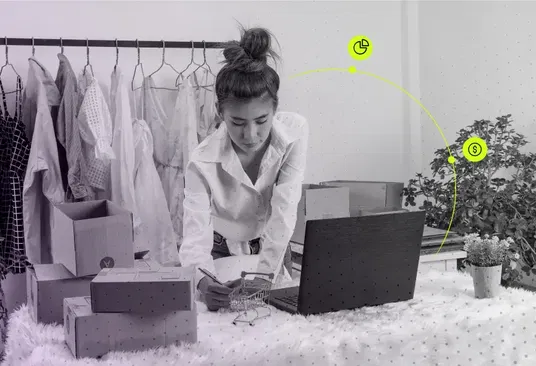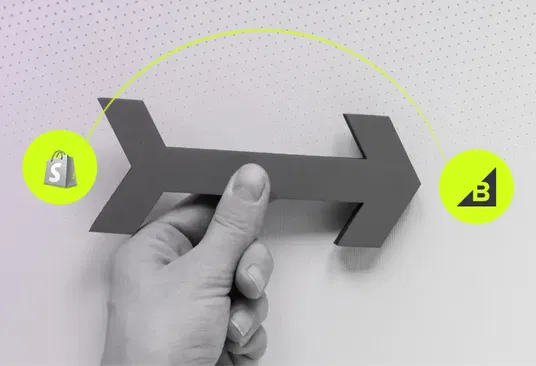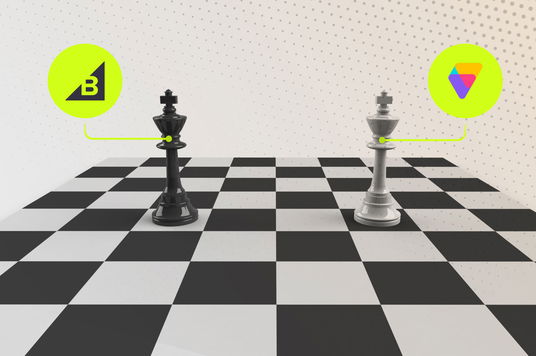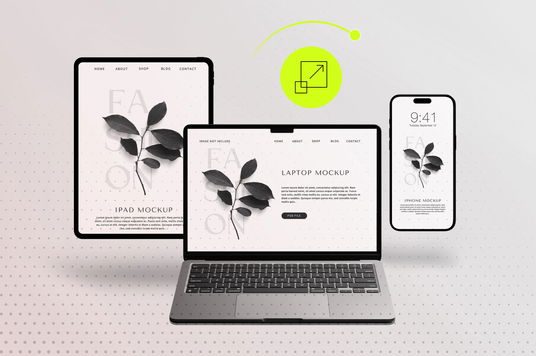What It Really Takes to Launch a High-Converting Fashion Store Online

- The Reality of Fashion eCommerce Success
- Pre-Launch Planning and Strategy
- Building the Technical Foundation
- Content and Visual Strategy
- Conversion Optimization Setup
- Testing and Validation Process
- Launch Execution Strategy
- Post-Launch Optimization
- Common Launch Mistakes to Avoid
- Frequently Asked Questions
- Key Takeaways
The Reality of Fashion eCommerce Success
Launching a high-converting fashion store online is far more complex than most entrepreneurs realize. It's not just about having great products and a beautiful website—success requires a strategic approach that addresses the unique challenges of fashion eCommerce.
The harsh reality? Over 80% of fashion eCommerce startups fail within their first two years, not because they lack great products, but because they underestimate what it takes to create a truly converting online experience.
⚠️ Reality Check: Fashion eCommerce has unique challenges: high return rates (20-30%), sizing uncertainty, seasonal demand fluctuations, and intense competition. Success requires addressing these challenges from day one, not after launch.
This comprehensive guide reveals what it really takes to launch a fashion store that doesn't just look good, but converts visitors into customers and customers into loyal brand advocates. We'll cover everything from pre-launch planning to post-launch optimization.
"The difference between fashion stores that succeed and those that fail isn't the quality of their products—it's the quality of their execution across every aspect of the customer experience."
— Fashion eCommerce Success Study 2025
Pre-Launch Planning and Strategy
Successful fashion store launches begin months before the website goes live. The planning phase determines whether your store will thrive or struggle from day one.
Market Research and Competitive Analysis
Before building anything, you need deep market understanding:
Target Audience Definition
Create detailed buyer personas including demographics, shopping behaviors, pain points, and style preferences. Fashion is highly personal—generic targeting fails.
Competitive Landscape Analysis
Analyze direct and indirect competitors' websites, pricing strategies, product offerings, and customer reviews. Identify gaps and opportunities.
Market Positioning Strategy
Define your unique value proposition, brand positioning, and differentiation strategy. What makes your fashion brand different and better?
Business Model and Revenue Strategy
Fashion eCommerce offers multiple revenue models. Choose the right approach for your brand:
| Business Model | Best For | Key Considerations |
|---|---|---|
| Direct-to-Consumer (D2C) | Original brands, private label | Higher margins, brand control, customer data |
| Multi-Brand Retail | Curated fashion retailers | Brand relationships, inventory management |
| Dropshipping | Low-investment startups | Lower margins, quality control challenges |
| Subscription/Rental | Premium fashion, accessories | Recurring revenue, logistics complexity |
Budget and Resource Planning
Realistic budget planning prevents costly surprises during development and launch:
- Platform and Development: $25,000 - $150,000+
- Design and UX: $10,000 - $50,000
- Photography and Content: $15,000 - $75,000
- Third-party Integrations: $5,000 - $25,000
- Marketing and Advertising: $20,000 - $100,000
- Inventory (if applicable): $50,000 - $500,000+
- Operations Setup: $10,000 - $30,000
- Legal and Compliance: $5,000 - $15,000
💰 Budget Reality: Most successful fashion eCommerce launches require $150,000 - $500,000+ in total investment. Underfunding is one of the primary reasons for failure. Our fashion eCommerce development services include detailed budget planning and ROI projections.
Building the Technical Foundation
The technical foundation of your fashion store determines its scalability, performance, and ability to convert visitors into customers.
Platform Selection Strategy
Choosing the right eCommerce platform is crucial for long-term success:
Wrong Platform Choice
- Limited customization options
- Poor mobile performance
- Inadequate inventory management
- Expensive scaling costs
- Limited integration capabilities
Right Platform Choice
- Fashion-specific features
- Mobile-first architecture
- Advanced variant handling
- Scalable infrastructure
- Extensive integration ecosystem
Essential Technical Requirements
Fashion stores have specific technical needs that must be addressed from the beginning:
- Mobile-First Architecture: 70%+ of fashion purchases happen on mobile. Your site must be built mobile-first, not adapted later.
- High-Performance Image Handling: Fashion is visual. Implement advanced image optimization, lazy loading, and CDN delivery.
- Advanced Product Variants: Handle complex size, color, and style combinations without performance degradation.
- Scalable Infrastructure: Plan for traffic spikes during sales, launches, and seasonal peaks.
- Security and Compliance: Implement PCI compliance, GDPR compliance, and robust security measures.
Performance Optimization from Day One
Performance directly impacts conversions in fashion eCommerce:
- Page Load Speed: Target under 2 seconds on mobile, under 1 second on desktop
- Core Web Vitals: Optimize LCP, FID, and CLS scores for better search rankings
- Image Optimization: Use WebP format, responsive images, and progressive loading
- Caching Strategy: Implement browser caching, CDN caching, and database optimization
⚡ Performance Impact: A 1-second delay in page load time can reduce conversions by 7%. For fashion sites with high-resolution images, performance optimization is critical for success.
Content and Visual Strategy
Fashion is inherently visual and emotional. Your content strategy must address both the rational and emotional aspects of fashion purchasing decisions.
Product Photography and Visual Content
High-quality visuals are non-negotiable for fashion eCommerce success:
Essential Photography Requirements:
- Multiple Angles: Front, back, side, and detail shots for every product
- Model Photography: Show products on diverse body types and sizes
- Lifestyle Shots: Products in real-world contexts and styling scenarios
- Detail Photography: Close-ups of textures, materials, and construction details
- Color Accuracy: Consistent lighting and color calibration across all images
Advanced Visual Features:
- 360-Degree Views: Allow customers to examine products from every angle
- Zoom Functionality: High-resolution images with smooth zoom capabilities
- Video Content: Product videos showing movement, drape, and styling
- AR Integration: Virtual try-on capabilities for supported products
Product Information Architecture
Fashion products require comprehensive information to reduce uncertainty and returns:
- Detailed size charts with measurements
- Material composition and care instructions
- Fit information (regular, slim, relaxed, etc.)
- Model measurements and size worn
- Color variation warnings and accuracy notes
- Styling suggestions and occasion recommendations
Brand Storytelling and Content Marketing
Fashion brands succeed through emotional connection and storytelling:
- Brand Story: Compelling narrative about your brand's mission, values, and inspiration
- Lookbook Content: Seasonal collections and styling inspiration
- Behind-the-Scenes: Design process, manufacturing, and brand culture content
- User-Generated Content: Customer photos, reviews, and styling examples
Conversion Optimization Setup
High-converting fashion stores are built with conversion optimization in mind from the beginning, not added as an afterthought.
Fashion-Specific Conversion Elements
Fashion eCommerce requires specialized conversion optimization tactics:
Trust and Social Proof:
- Customer Reviews with Photos: Real customers wearing your products
- Size and Fit Reviews: Customer feedback about sizing accuracy
- Influencer Endorsements: Credible fashion influencer partnerships
- Press and Media Mentions: Fashion magazine features and awards
Urgency and Scarcity:
- Limited Stock Indicators: "Only 3 left in your size"
- Seasonal Collection Timers: "Spring collection ends in 5 days"
- Flash Sale Countdowns: Time-limited promotional pricing
- Exclusive Access: Member-only previews and early access
Checkout Optimization for Fashion
Fashion checkout requires specific optimizations to address common abandonment reasons:
- Guest Checkout Option: Allow purchases without account creation to reduce friction
- Multiple Payment Methods: Include buy-now-pay-later options popular with fashion shoppers
- Clear Return Policy: Prominently display return information during checkout
- Shipping Options: Offer express shipping for fashion-forward customers
- Size Confirmation: Final size verification before purchase completion
Testing and Validation Process
Thorough testing prevents costly post-launch issues and ensures your fashion store performs flawlessly from day one.
Comprehensive Testing Checklist
Fashion eCommerce requires extensive testing across multiple dimensions:
- Cross-browser compatibility (Chrome, Safari, Firefox, Edge)
- Mobile responsiveness across different screen sizes
- Page load speed testing under various conditions
- Payment processing and security testing
- Form validation and error handling
- Search functionality and filtering accuracy
- Complete customer journey testing
- Product discovery and navigation flow
- Checkout process optimization
- Return and exchange process validation
- Customer service integration testing
- Accessibility compliance verification
Beta Testing with Real Customers
Test your fashion store with real customers before public launch:
- Friends and Family Beta: Initial testing with trusted network
- Target Customer Beta: Testing with actual target demographic
- Influencer Preview: Early access for fashion influencers and bloggers
- Feedback Collection: Systematic feedback gathering and analysis
🧪 Testing ROI: Brands that conduct thorough pre-launch testing see 40% fewer post-launch issues and 25% higher initial conversion rates. The investment in testing pays for itself through reduced support costs and higher sales.
Launch Execution Strategy
A successful fashion store launch requires careful orchestration of technical, marketing, and operational elements.
Soft Launch Strategy
Consider a phased launch approach to minimize risk and maximize learning:
Phase 1: Stealth Launch (Week 1-2)
Limited product catalog, invite-only access, focus on technical validation and initial feedback collection.
Phase 2: Soft Launch (Week 3-4)
Expanded catalog, limited marketing, email list and social media announcement, monitor performance metrics.
Phase 3: Public Launch (Week 5+)
Full catalog, comprehensive marketing campaign, influencer partnerships, press outreach, and advertising campaigns.
Launch Day Execution
Coordinate all launch activities for maximum impact:
Technical Preparation:
- Server capacity scaling for expected traffic
- Monitoring and alerting systems activation
- Customer support team briefing and preparation
- Backup and recovery procedures verification
Marketing Coordination:
- Social media campaign activation
- Email marketing sequence launch
- Influencer content publication
- Press release distribution
- Paid advertising campaign activation
Post-Launch Optimization
Launch is just the beginning. Continuous optimization is essential for long-term success in fashion eCommerce.
Performance Monitoring and Analytics
Track key metrics that matter for fashion eCommerce success:
| Metric Category | Key Metrics | Target Benchmarks |
|---|---|---|
| Conversion | Conversion rate, AOV, cart abandonment | 2-4%, $75-150, <60% |
| Customer Experience | Return rate, customer satisfaction, NPS | <20%, >4.0/5, >50 |
| Performance | Page load speed, mobile performance | <2s mobile, <1s desktop |
| Engagement | Time on site, pages per session, bounce rate | 3+ min, 4+ pages, <50% |
Continuous Improvement Process
Implement systematic optimization processes:
- Weekly Performance Reviews: Analyze key metrics and identify improvement opportunities
- Monthly A/B Testing: Test new features, layouts, and conversion elements
- Quarterly Feature Updates: Add new functionality based on customer feedback and market trends
- Seasonal Optimizations: Prepare for seasonal peaks and adjust inventory/marketing accordingly
Common Launch Mistakes to Avoid
Learn from the failures of others to increase your chances of success:
❌ Critical Mistakes That Kill Fashion Stores:
- Inadequate Mobile Optimization: 70%+ of traffic is mobile—poor mobile experience kills conversions
- Poor Product Photography: Low-quality images destroy trust and credibility
- Insufficient Size Information: Unclear sizing leads to high return rates and customer dissatisfaction
- Slow Page Load Times: Fashion customers are impatient—slow sites lose sales immediately
- Complicated Checkout Process: Every extra step reduces conversion rates significantly
- Inadequate Customer Service: Fashion customers need support—poor service kills repeat business
- Ignoring Return Process: Difficult returns create negative reviews and reduce trust
Budget and Timeline Mistakes
Avoid these common planning errors:
- Underestimating Development Time: Quality fashion sites take 4-6 months minimum
- Insufficient Marketing Budget: Plan for 6-12 months of marketing investment
- Ignoring Ongoing Costs: Factor in hosting, maintenance, and optimization costs
- Rushing to Launch: Better to launch later with quality than early with problems
✅ Success Factors: Fashion stores that succeed focus on mobile-first design, high-quality visuals, comprehensive product information, fast performance, and exceptional customer service. Our fashion eCommerce development services address all these critical success factors.
Frequently Asked Questions
1. How long does it really take to launch a high-converting fashion store?
A properly executed fashion eCommerce launch takes 4-8 months from planning to public launch. This includes 2-3 months of planning and strategy, 2-4 months of development and content creation, and 1-2 months of testing and optimization. Rushing this timeline typically results in poor performance and costly post-launch fixes.
2. What's the minimum budget needed for a successful fashion store launch?
For a professional fashion eCommerce launch, budget $150,000 - $500,000+ total investment. This includes development ($50,000-$200,000), content creation ($25,000-$100,000), marketing ($50,000-$150,000), and working capital. Underfunded launches are a primary cause of failure in fashion eCommerce.
3. Should I launch with a full product catalog or start small?
Start with a curated selection of 50-200 products that represent your brand well. This allows you to perfect the customer experience, gather feedback, and optimize operations before scaling. A smaller, well-executed catalog converts better than a large, poorly-managed one.
4. How important is mobile optimization for fashion eCommerce?
Mobile optimization is critical—70%+ of fashion purchases happen on mobile devices. Your site must be built mobile-first, not adapted later. Poor mobile experience is one of the fastest ways to kill a fashion eCommerce launch.
5. What's the biggest mistake fashion brands make during launch?
The biggest mistake is rushing to launch without proper testing and optimization. Fashion customers have high expectations for user experience, visual quality, and performance. Launching with a subpar experience damages your brand reputation and makes recovery difficult.
6. How do I handle high return rates in fashion eCommerce?
Address returns proactively with comprehensive size guides, detailed product information, customer photo reviews, and AR try-on features. Also, make the return process easy and transparent. Brands that address sizing uncertainty upfront see 30-50% lower return rates.
7. Should I hire an agency or build in-house?
For fashion eCommerce, specialized agencies typically deliver better results because they understand fashion-specific challenges and have proven processes. In-house teams often lack the specialized knowledge needed for fashion eCommerce success, leading to longer timelines and higher costs.
8. How do I measure success after launch?
Track conversion rate, average order value, return rate, customer acquisition cost, and customer lifetime value. Fashion-specific metrics include size-related returns, mobile conversion rates, and social media engagement. Set benchmarks before launch and monitor progress weekly.
Key Takeaways
Launching a high-converting fashion store online requires far more than most entrepreneurs realize. It's a complex process that demands strategic planning, significant investment, specialized expertise, and meticulous execution.
Here's what successful fashion eCommerce launches have in common:
- Comprehensive Planning: 2-3 months of detailed market research, strategy development, and resource planning
- Adequate Investment: $150,000-$500,000+ budget covering all aspects of development, content, and marketing
- Mobile-First Approach: Built for mobile users from the ground up, not adapted later
- Quality Content: Professional photography, detailed product information, and compelling brand storytelling
- Performance Focus: Fast loading times, smooth user experience, and technical excellence
- Thorough Testing: Extensive testing with real users before public launch
- Continuous Optimization: Ongoing improvement based on data and customer feedback
The fashion eCommerce landscape is unforgiving to poorly executed launches. Customers have high expectations, competition is intense, and second chances are rare. However, brands that invest properly in planning, development, and execution create sustainable competitive advantages.
"Success in fashion eCommerce isn't about having the best products—it's about executing every aspect of the customer experience flawlessly, from first impression to post-purchase support."
— 1Center Fashion eCommerce Team
Ready to Launch Your High-Converting Fashion Store?
Don't leave your fashion eCommerce success to chance. Our team has launched hundreds of successful fashion stores and understands exactly what it takes to create a high-converting online experience. From strategic planning to post-launch optimization, we handle every aspect of your fashion store development.
Get Your Free Fashion Store Launch Strategy Session →
Or explore our comprehensive fashion eCommerce development services to see how we can help your brand succeed online.
About 1Center
1Center is a leading eCommerce development agency specializing in fashion and apparel brands. Our team has successfully launched over 200 fashion eCommerce stores, from startup brands to established retailers. We understand the unique challenges of fashion eCommerce and have developed proven processes that maximize the chances of launch success and long-term growth.
Written byPublished June 05, 2025
1Center


